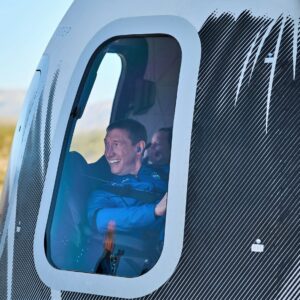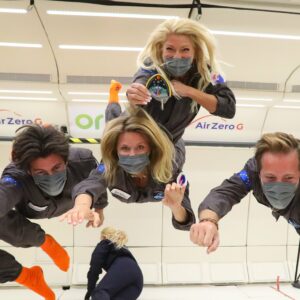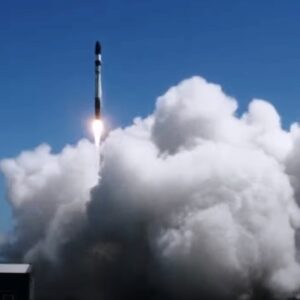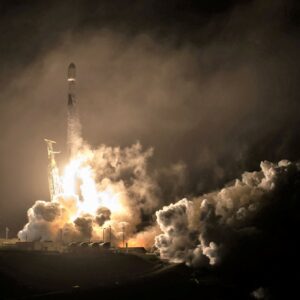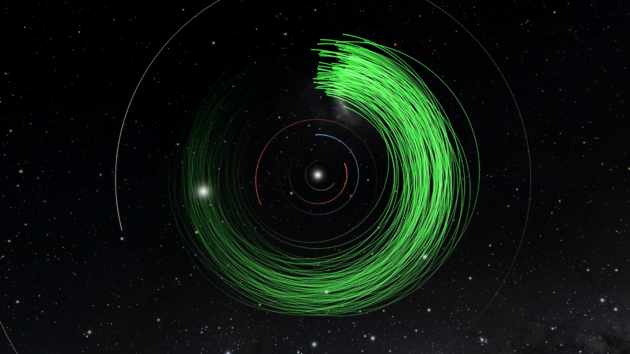
Astronomers have used a cloud-based technique pioneered at the University of Washington to identify and track asteroids in bunches of a hundred or more. Their achievement could dramatically accelerate the quest to find potentially threatening space rocks.
The technique makes use of an open-source analysis platform known as Asteroid Discovery Analysis and Mapping, or ADAM; plus a recently developed algorithm called Tracklet-less Heliocentric Orbit Recovery, or THOR. The THOR algorithm was created by Joachim Moeyens, an Asteroid Institute Fellow at UW; and Mario Juric, director of UW’s DiRAC Institute.
Teaming up ADAM and THOR may sound like a cross between a Bible story and a Marvel comic, but this dynamic duo’s superpower is strictly scientific: When ADAM runs the THOR algorithm, the software can determine the orbits of asteroids, even previously unidentified asteroids, by sifting through any large database of astronomical observations.
ADAM has been a long-term project for the Asteroid Institute, a program of the California-based B612 Foundation.
“Discovering and tracking asteroids is crucial to understanding our solar system, enabling development of space, and protecting our planet from asteroid impacts,” former NASA astronaut Ed Lu, the Asteroid Institute’s executive director, said today in a news release. “With THOR running on ADAM, any telescope with an archive can now become an asteroid search telescope.”
To demonstrate the technique’s power, Moeyens used THOR to analyze 30 days’ worth of imagery from the NOIRLab Source Catalog, a collection of nearly 68 billion observations made by the National Optical Astronomy Observatory’s telescopes between 2012 and 2019.
“The Asteroid Institute’s ADAM platform is perfectly suited for the THOR algorithm,” Moeyens explained. “Built on Google Cloud, ADAM’s innate scalability and computational power allows us to fully maximize THOR’s potential as a discovery algorithm and ultimately allows us to find those asteroids that have thus far remained undetected in archival datasets.”
Out of 1,354 asteroid detections made using THOR, Moeyens selected a sampling of 113 candidates to submit to the International Astronomical Union’s Minor Planet Center. The center, which maintains the authoritative list of asteroids, added 104 of the asteroids to its list. (The other nine turned out to be previously known asteroids.)
Most of the 104 asteroids are in the main belt, between Mars and Jupiter. None of them poses a threat to Earth.
Validation for the new asteroid search technique could open the way to discover tens of thousands of asteroids that are hidden within the data sets from NOIRLab and other telescope teams.
These developments couldn’t have come at a better time.
When it comes to discovering an asteroid, being able to describe its orbit is a must. Nearly all of the more than 750,000 asteroids on the Minor Planet Center’s list have been identified by tracking the shifts in their orbits, often starting out with shifts seen over the course of a single night.
Computers have taken a lot of the tedium out of that tracking task in recent years. Nevertheless, relying on single-night tracks, which astronomers call “tracklets,” can take you only so far.
“Astronomers are reaching the limits of what’s discoverable with current techniques and telescopes,” Juric said.
Juric told GeekWire that the first stages in the evolution of astronomy focused on “big glass, and bigger glass, and even bigger glass.”
“Then it turned into big cameras, and even bigger cameras, and even bigger instruments,” he said. “Now we have to add software to that component, because that’s really where the next breakthrough is likely to happen.”
Powered by Google Cloud, the ADAM-THOR technique can look at archival views of the night sky captured at different times, and then extrapolate from that data to pinpoint the same asteroid at different points in its orbit.
Both Juric and Moeyens said identifying the first 104 asteroids was just the start. “It’s a small number of what’s possibly in that data set,” Moeyens told GeekWire. Juric estimated that the first round of analysis looked at a mere 0.2% of the total NOIRLab data set. It’ll take several months to go through the whole database.
“We’ll have a fun summer,” Juric said.
Moeyens said the “tracklet-less” search technique needn’t be limited to archival searches. “With additional development, ADAM-THOR will be able to perform real-time asteroid discovery on observations as they come in from telescopes around the globe,” he said.
The pace of real-time discovery is expected to go into overdrive when the Vera C. Rubin Observatory (and its Simonyi Survey Telescope, named after Seattle software billionaire Charles Simonyi) comes online in Chile in 2024.
UW’s DiRAC Institute is due to play a key role in analyzing data from the Rubin Observatory. “For solar system studies, that observatory is going to be a once-in-a-generation game-changer,” Juric said. “To give you a sense of what’s coming, we’re expecting anywhere between one to 10 interstellar objects per year to be discovered. Numbers of trans-Neptunian objects will go up by a factor of 10, and total numbers of asteroids will go up by a factor of five.”
Looking beyond asteroids, THOR could well be used to find other kinds of solar system objects, perhaps even planets.
“We’re looking at trans-Neptunian objects and trying to extend the depth to which [the observatory] can see, in effect, by a factor of two,” Juric said. “So, twice as far as you could with traditional methods for looking for things like Planet Nine or dwarf planets.”
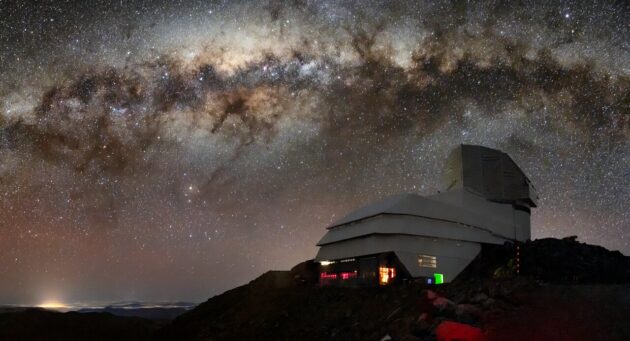
The Asteroid Institute will also have a big role to play — thanks to a financial boost from the B612 Foundation.
Last week, the B612 Foundation announced that it’s received $1.3 million in contributions to support the Asteroid Institute and the ADAM project. The foundation also has won a commitment from Tito’s Handmade Vodka to match additional contributions up to the $1 million level.
“We are humbled and inspired by the generosity of our funding partners,” Danica Remy, president and chief executive of the B612 Foundation, said in a news release. “Their support over the years and into the future, along with Tito’s matching challenge, is helping us scale our technical team and expand our scientific, technical and educational partnerships.”
Remy said the B612 Foundation, which was created 20 years ago to raise awareness about the perils and potential payoffs associated with asteroids, has a three-year goal to raise $4 million more to advance ADAM. “These funds will enable ADAM to analyze historical data and future data coming from Vera Rubin Observatory and its Legacy Survey of Space and Time, which will enable new asteroids’ discoveries and orbits,” she said.
This report has been updated with quotes from UW astronomers Joachim Moeyens and Mario Juric.
